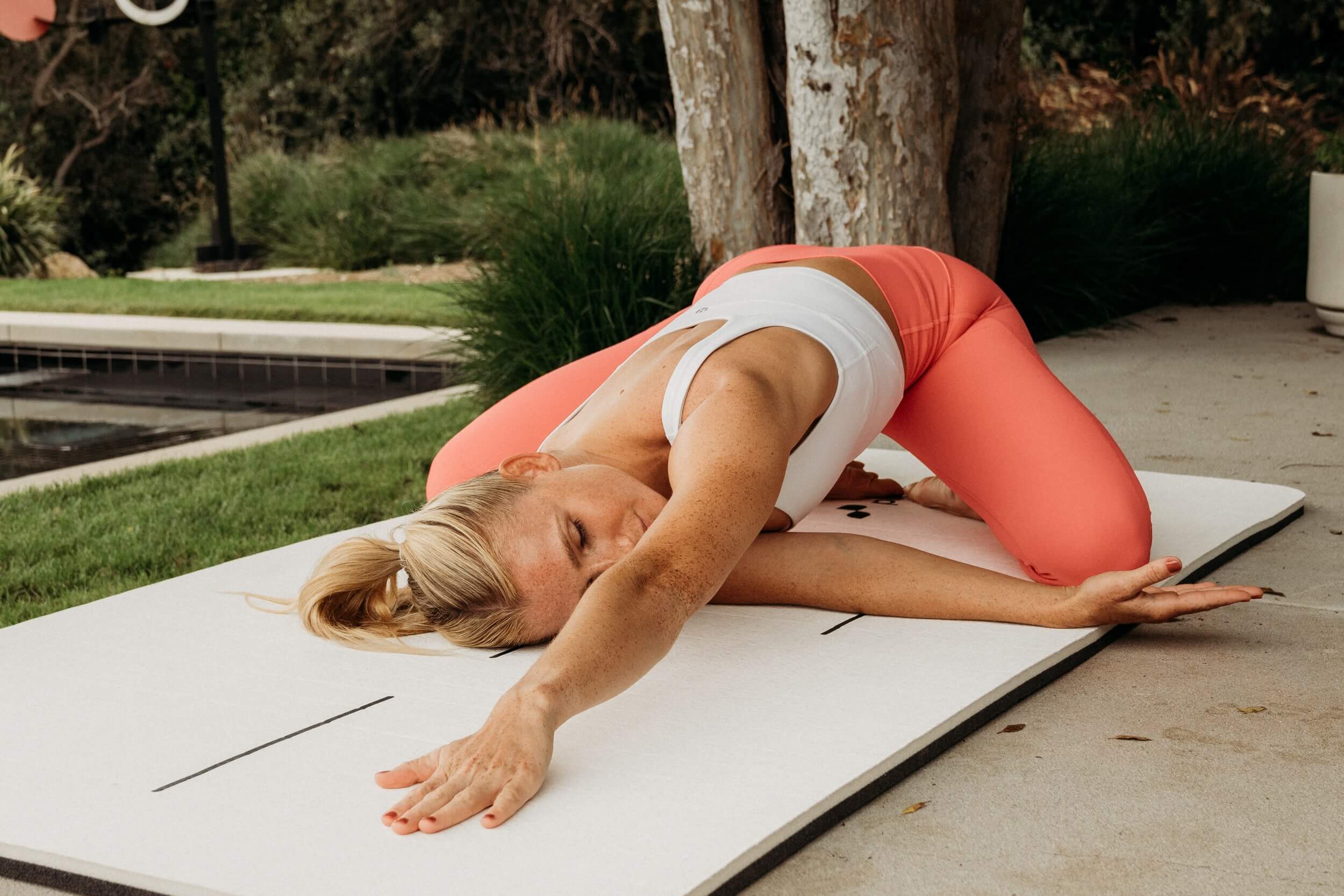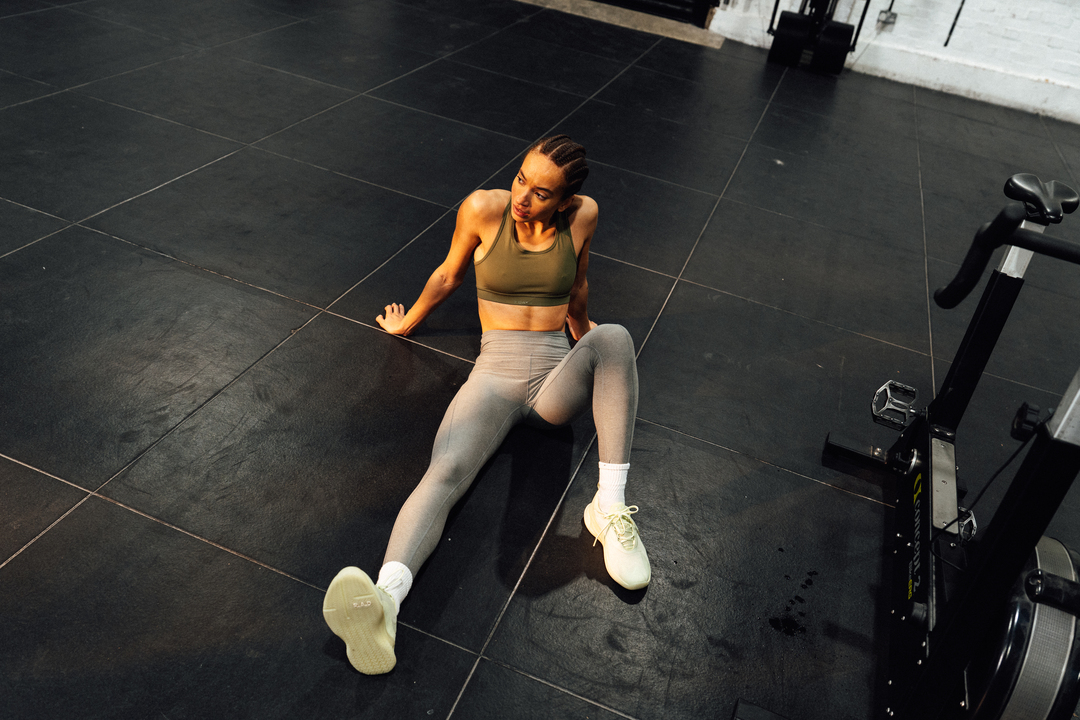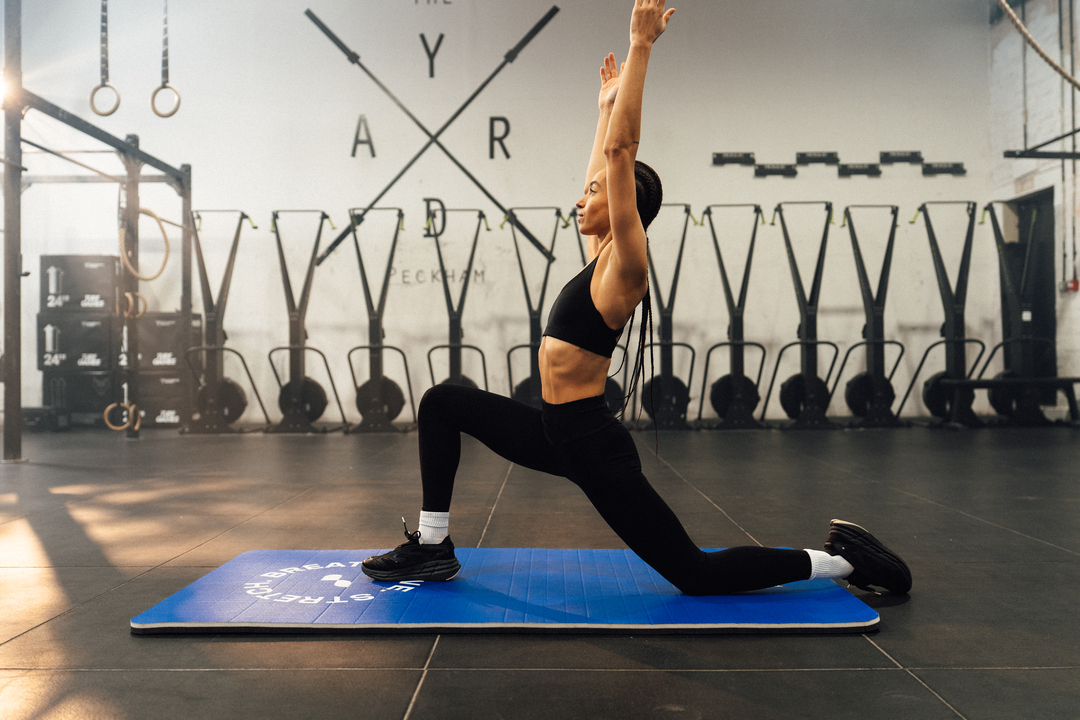How to Increase Athleticism? Whether you’re a weekend warrior or a dedicated pro, pushing your body to perform at a higher level comes with challenges. While striving to improve your personal best, you may feel tight, sore, or even injured. Ideally, the goal is to avoid injuries and recover quickly from discomfort to stay on track with your training. One way to accomplish this is with sports massage. The benefits of sports massage go beyond relaxation and can help you recover faster, perform better, and stay injury-free so you can consistently train at your best and reach peak physical performance.
The solution doesn’t stop with massage therapy. Pliability's mobility app offers a valuable tool to help you achieve your objectives. With easy-to-follow routines, you can improve your recovery, performance, and injury resilience with regular flexibility training.
What is a Sports Massage?

Sports massage is a powerful tool for athletes and active individuals looking to boost performance and recover from workouts.
Unlike traditional massage therapies that primarily focus on relaxation, stress relief, or general pain management, sports massage is specifically designed to support movement, performance, and recovery. It targets the muscle groups most engaged in your activities, helping to address tightness, soreness, or imbalances that might arise from repetitive movements.
Massage for Runners & Pickleball Players
For example, if you're a runner, a sports massage therapist will likely focus on your lower body, working on your calves, hamstrings, and hip flexors to enhance flexibility and ease muscle tension. If you play pickleball, they might direct more attention to your shoulders, forearms, and wrists, areas that endure repeated swings and quick directional changes.
How Sports Massage Helps Athletes
“Sports massage has three key goals: preventing injury, supporting injury recovery, and supporting recovery from movement in general, all of which contribute to better performance,” says Dr. Marek. While it can help with general muscle soreness or stiffness from physical activity, it’s also beneficial for addressing discomfort stemming from an injury.
How to Incorporate Sports Massage into Your Routine
It’s crucial to recognize that sports massage isn’t a standalone solution; it works best as part of a broader strategy that includes movement. “It’s maybe 10 to 30% of your full program,” Dr. Marek says.
Strength training, mobility exercises, nutrition, and hydration are critical in keeping your body resilient and prepared for activity. Sports massage can be used alongside these elements to support recovery and performance.
Recovery & Maintenance
For some, a sports massage before or after a big event, like a half marathon or a tournament, may help with muscle preparation or post-event recovery. Others might schedule regular maintenance sessions, monthly or quarterly, to manage tension and support ongoing training.
More frequent sessions may be beneficial if you’re dealing with pain or recovering from an injury. Still, they should always be paired with movement-based rehab and strengthening exercises for the best long-term results.
Sports Massage Techniques
Sports massage includes more than just the traditional rubbing and kneading you might associate with a typical massage. It incorporates specialized techniques designed to address the unique needs of athletes and active individuals.
Each technique targets different layers of tissue, helping to release tension, improve circulation, and enhance muscle recovery. Here’s a breakdown of some standard sports massage techniques.
Deep Tissue Massage
This technique involves slow, sustained pressure to reach deeper muscle and connective tissue layers. “You have nerves, connective tissue, fascia, and muscles,” says Dr. Marek. “Deep tissue massage sinks into those layers with the goal of releasing tension.” It’s often used to relieve chronic muscle tightness, break down adhesions (bands of stiff tissue), and promote better mobility.
Trigger Point Therapy
Trigger points, often called muscle knots, are tight, sensitive areas within muscles that can cause discomfort or even radiate pain to other parts of your body. This technique applies direct pressure to a trigger point for 30 to 90 seconds to help the tissue relax.
“If you have a lot of knots, a trigger point massage can help release these areas of tension,” says Dr. Marek. This technique particularly benefits people with repetitive strain injuries or persistent muscle tightness.
Tapotement
A rhythmic tapping or chopping motion (often resembling a karate chop) is used in this technique to stimulate circulation and relax muscles. “The rhythmic striking gives a different input to your brain to help muscles release,” Dr. Marek explains. Tapotement is commonly used before activity to invigorate muscles or after exercise to promote relaxation.
Vibration Therapy
Similar to tapotement, vibration stimulates your nervous system and encourages your muscles to relax. This technique can be performed manually or with the help of tools like massage guns. “Massage guns are a common tool used in sports massage to provide vibration,” says Dr. Marek.
“They can be used on various body parts like your legs, back, and neck, and are a great option for self-massage.” Vibration therapy may help reduce muscle soreness and improve flexibility, making it a popular choice for recovery.
Cupping Therapy
Unlike most massage techniques, which involve pressing into the muscle, cupping works by pulling tissue away. “Special cups create suction on your skin, helping to separate fascia, muscle, and skin and release tension and adhesions,” says Dr. Marek.
Many athletes use cupping to improve blood flow and reduce stiffness. It can leave temporary circular bruises, which usually fade within a few days.
Sports Massage vs. Deep Tissue Massage
Sports and deep tissue massage use firm pressure and slow, deep strokes to release muscle tension, but they serve different purposes.
Deep tissue massage is a whole-body approach to relieve chronic pain, musculoskeletal issues, and general muscle stiffness. It works by breaking up adhesions (tight bands of tissue) and improving mobility, but it isn’t necessarily tailored to specific movement patterns or athletic recovery.
Targeted Recovery & Performance
Sports massage is designed for athletes and active individuals, focusing on recovery, injury prevention, and optimizing movement for a specific sport or activity. “Most sports massages include deep tissue techniques, but a deep tissue massage doesn’t necessarily focus on a particular muscle group like sports massage does,” explains Dr. Marek.
A sports massage therapist may target overworked areas, like a runner’s calves and hamstrings or a swimmer’s shoulders, using a combination of deep tissue work, trigger point therapy, stretching, or vibration techniques to enhance performance and recovery.
Focused Techniques for Healing
Deep tissue massage may be the best fit if you’re looking for general muscle relief and chronic tension management. But sports massage offers a more specialized approach if you need targeted work for a sports-related strain, event preparation, or recovery. Both can complement each other and be part of a well-rounded recovery plan.
Related Reading
- How to Improve Athletic Performance
- Sports Performance Analysis
- Athletic Performance Testing
- How Long Does Alcohol Affect Athletic Performance
- How Does Iron Deficiency Affect Athletic Performance?
16 Major Benefits of Sports Massage for Faster Recovery

1. Eases Post-Workout Soreness
After a challenging workout, you may experience delayed onset muscle soreness (DOMS), which typically peaks 12 to 48 hours later as your muscles repair and adapt.
A review of 29 studies in BMJ Open Sport & Exercise Medicine found that post-exercise sports massage reduced DOMS symptoms by 13%, helping to relieve discomfort and support faster recovery between workouts.
2. Reduces Fatigue
Feeling tired after a challenging workout is typical, but constant fatigue can interfere with training and increase your risk of injury.
A review of 99 studies in Frontiers in Physiology found that massage was more effective at reducing perceived fatigue than other recovery methods, such as:
- Stretching
- Compression garments
- Cryotherapy (cold therapy)
3. Improves Flexibility
A BMJ review of 29 studies found that sports massage can improve flexibility. Better flexibility helps you move more easily in sports, exercise, and daily activities while lowering your risk of strains and sprains.
4. Aids Recovery
Proper circulation is essential for tissue repair, whether healing from an injury, like a muscle strain or tendonitis, or simply recovering from an intense workout. A small study in The Journal of Alternative and Complementary Medicine suggests that massage enhances circulation.
At the same time, another study in the Journal of Sport Rehabilitation found that deep tissue massage, a typical sports massage technique, accelerated recovery in people with knee tendonitis. While more research is needed, these findings suggest that massage can be valuable for supporting the body’s natural healing process.
5. Promotes Better Sleep
Sleep is a powerful tool for recovery; it’s when your body repairs and rebuilds, helping you feel refreshed and ready for your next workout. Prioritizing good sleep can enhance recovery, ease discomfort, and support better performance.
A study in BMJ Open Sport & Exercise Medicine found that elite para-cyclists who received weekly or bi-weekly massages for 18 months reported improved sleep, which they said helped them train more effectively and perform at their best.
6. Enhances Mental Readiness
Sports and exercise aren’t just about physical ability and require focus, confidence, and resilience. A positive mindset can make all the difference in how you perform and feel.
A 2023 review of 114 studies in the journal Sports found that sports massage helps reduce stress and anxiety while improving mood. By promoting relaxation and mental clarity, sports massage can help you feel more prepared, motivated, and ready to take on your next challenge.
7. A Sports Massage Flushes Toxins From The Body And Improves Lymphatic And Blood Circulation
Massage therapy works to realign the muscles and connective tissue. The techniques involved also work to flush toxins. There are two ways that these neuromuscular techniques work their magic:
- By applying pressure and encouraging circulation around the body
- By applying a technical, mechanical pressure to the connective tissue and muscles
Toxins tend to lodge around the joints. If unaddressed, they can accumulate over time, causing more severe injuries and more frequently. These toxins are “flushed” when stimulated by applying technical, mechanical pressure to the connective tissue and muscles.
Enhancing Circulation & Recovery
This mechanical pressure also helps to improve the body’s circulation. This ensures a good blood supply to all tissues and the “venous return.” The venous return is the flow of blood back to the heart, and it is this venous return that is essential for removing toxins.
This venous return also aids in recovery. DOMS induced by irregular or excessive exercise is caused by lactic acid, which restricts blood and oxygen in contracting muscles, causing pain and muscle weakness. Sports massage helps to supply blood back to these muscles.
Stimulating Lymphatic Flow & Improving Recovery
The compression techniques of sports massage therapy also stimulate the lymphatic system. One study found that “direct mechanical pressure” on a localized body area enhanced “local micro-circulatory blood and lymph flow results.”
Stimulated lymph flow means better lymphatic drainage. A more stimulated lymphatic system not only improves recovery time but can also prevent conditions such as:
- Oedema
- Lymphedema
8. Enhanced Performance
Sports massages help optimize athletic performance by increasing flexibility, range of motion, and muscle function. Muscle flexibility and joint mobility can improve agility, power, and overall athletic performance.
9. Injury Prevention
By identifying and addressing muscle imbalances, tightness, and areas of potential injury, sports massages can help prevent common sports-related injuries. Regular massage therapy can keep muscles in optimal condition and minimize the risk of strains, sprains, and other musculoskeletal problems.
10. Increased Blood Circulation
Sports massages stimulate blood flow to the muscles, enhancing the delivery of oxygen and vital nutrients. This improved circulation nourishes the muscles and promotes healing, while aiding in removing metabolic waste products.
11. Decreased Muscle Tension
Intense physical training can lead to muscle tension and tightness. Sports massages can effectively release muscle tension and knots, promoting relaxation and reducing the risk of overuse injuries.
12. Psychological Relaxation And Stress Reduction
Sports massages positively impact psychological well-being by promoting relaxation, reducing stress, and improving sleep quality. Athletes often face high levels of physical and mental stress, and regular massage therapy can provide much-needed mental and emotional rejuvenation.
13. Improved Body Awareness
Through the targeted touch and manipulation of muscles, sports massages can enhance an athlete's body awareness. This heightened awareness allows athletes to better understand their bodies, identify areas of tension or weakness, and adjust their training or technique.
14. Muscle Relaxation And Pain Relief
Sports massages effectively reduce muscle tension, knots, and trigger points. The targeted techniques used in the massage help to release muscular tightness, alleviate pain, and promote overall relaxation.
15. Enhanced Mental Focus
Sports massages have a positive impact on mental focus and concentration. Reducing muscle tension and promoting relaxation can help athletes and individuals achieve a precise and focused mindset, improving their cognitive performance during sports or physical activities.
16. Increased Overall Well-Being
Beyond the physical benefits, sports massages contribute to an overall well-being and balance for athletes and active individuals. They provide a dedicated time for relaxation, self-care, and self-reflection, fostering a positive mindset and motivation to continue pursuing their athletic goals.
Related Reading
- Adaptogen Benefits for Athletes
- Athletic Performance Counseling
- How to Improve Running
- How to Get Faster at Sprinting
- How to Run a Faster Marathon
- How to Increase Stamina for Running
- How to Improve Agility
Improve Your Flexibility with Our Mobility App Today | Get 7 Days for Free on Any Platform
Pliability offers a fresh take on yoga, tailored for performance-oriented individuals and athletes. Our app features a vast library of high-quality videos designed to improve flexibility, aid recovery, reduce pain, and enhance range of motion.
Pliability provides daily-updated custom mobility programs for those interested in optimizing their health and fitness. It also includes a unique body-scanning feature to pinpoint mobility issues. If you're feeling limited by pain or ability to move, Pliability aims to complement your fitness routine and help you move better.
Sign up today for 7 days absolutely for free, on iPhone, iPad, Android, or on our website to improve flexibility, aid recovery, reduce pain, and enhance range of motion with our mobility app.
Related Reading
- How to Improve Sports Performance
- Best Vitamins for Athletes
- Strength Training for Athletes
- Cross Training for Swimmers
- Cross Training for Runners
- Best Peptides for Athletic Performance
- Breathing Exercises for Athletes
- Goal Setting for Athletes




.jpg)
.jpg)


